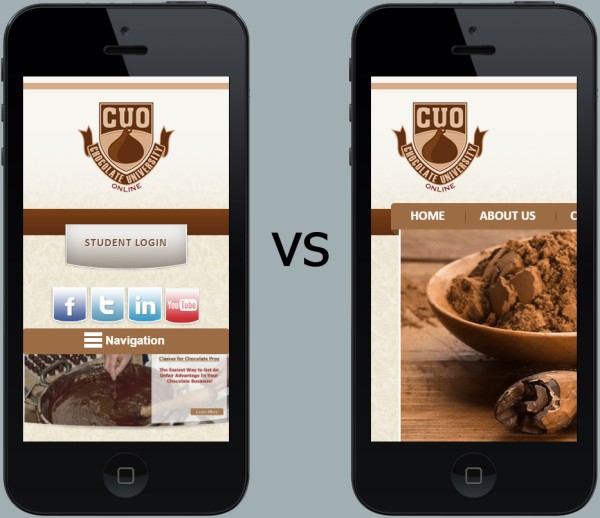[Do you like this? Please subscribe to my YouTube Channel and then share it for me!]
Video Summary
According to Google, a key consideration as to how well your website shows up when someone searches for what you do is to make sure your website provides a better user experience relative to other sites. But, how do we measure this?
There is a set of core web vitals that acts as performance metrics. These are: Largest Contentful Paint, First Input Delay, and Cumulative Layout Shift. I talked more about these metrics in a previous video.
But, in addition to the core web vitals, there are three more ways to make sure your website provides a better user experience. When you improve the vitals and address these other issues, you begin to influence your way to the top of the search results!
Video Transcript
Hello, my name is Jeffrey Kirk.
Do you want your website to rank higher in the search results? I certainly do. Most businesspeople I talk to do, and I think most businesses around the world would recognize that good search positioning is beneficial.
Ever wonder why your business is not as visible as you want it to be? That’s a common concern.
According to Google, a key consideration as to how well your website shows up when someone searches for what you do is to make sure your website provides a better user experience relative to other sites. But, how do we measure this?
There is a set of core web vitals that acts as performance metrics. These are: Largest Contentful Paint, First Input Delay, and Cumulative Layout Shift. I talked more about these metrics in a previous video, and I’ll include the link here for easy access.
But, in addition to the three core web vitals, there are three more ways to make sure your website provides a better user experience. When you improve the vitals and address these other issues, you begin to influence your way to the top of the search results!
I’m going to cover these three additional concerns in this video, so keep watching…
Three Additional Web Vitals
Did you know that 94% of organic searches come from Google and, these days, it turns out that 75% of searchers prefer mobile-friendly sites? So, do you want your business to show up for those who use their mobile phone to do searches?
Clearly, smartphone usage has become a significant part of our daily lives. And it’s so easy to do a search at any time because your phone is with you. It’s not like you have to wait to go back to your desk anymore. Many of our online activities are performed with the convenience of our phones. And yet, these devices have small screens.
How about you? Would you rather do a search on a small screen the moment you want to know the answer, or would you rather wait until you are back in front of a large screen? These days, most people are choosing time convenience over larger screen size.
It’s so convenient to have your phone available whenever, and wherever, you need an answer, or you want to conduct some form of transaction; like paying bills, or booking hotel rooms, buying groceries, ordering meals, or even shipping products… and that’s in addition to the usual messaging and social media. Therefore, people are showing up at your website while using their phones.
Have a Mobile-Friendly Website
Did you know that making your website mobile-friendly has a significant effect on their user experience and your website ranking? In fact, it’s been shown that more than half of all global web traffic now comes from mobile devices!
That shows how important it is for your website to appear in Google searches even when your target audience includes mobile users. And that is why, for Google to consider your website to appear at the top, you should have a mobile-friendly website.
Way back in 2013, Google published a blog post that issued a warning. They said websites that are poorly optimized for mobile are less likely to appear in smartphone searches. And they would know because they’re the ones who deliver the search results! Yet there are still many businesses with old websites or even newer sites that are not mobile-friendly.
So, what does a mobile-friendly website look like? In general, your site should be able to adjust nicely to smaller screen sizes and formats. Websites that do this automatically are called responsive websites.

By now all websites should be responsive. That means they can resize themselves to look good on whatever device the user has, whether it’s a large monitor on their desktop or a smaller laptop computer, or a tablet, or a phone.
You must also have touch-friendly buttons and page elements for ease of use on the smaller devices. And, even on mobile devices, fast download speeds are important. You want to make sure your visitors have a positive experience, and that your website doesn’t take too long to respond.
A study by Google shows that consumers usually expect to find information quickly no matter how or where they are doing the search. In fact, 50% said that even if they like a business, they are less likely to engage with that business if their website is not mobile-friendly. Wow. 50%!
If your website is not mobile-friendly yet, you’ve lost half of your audience already. And that number is growing. You are missing out in a big way! So, if your website is not yet optimized for mobile devices, you should consider making this a priority.
Have a Safe and Secure Website
The second thing I want to bring up is safe browsing. Website security is a top priority for Google and, therefore, this also counts as one of the vital factors for a website to rank high in the search results. Google wants to make sure that the websites people find using Google search are secure.
How does this affect your business? If Google suspects that your site contains malicious links or viruses, users will see a warning in the search results, and the worst-case scenario is that your site will not be shown at all. If your site is hidden, then customers will not find you even if they try. Therefore, you lose new clients and potential sales.
Research conducted by Hubspot shows that 82% of consumers will leave a website that is not secure. 82%? That’s another really big number. That’s a lot of sales to lose.
So, how do you make sure your website is safe and secure?
First, you should consider installing a security plug-in to avoid malware breaches which can lead to data loss and other ongoing problems. Next, use strong passwords and ensure that your website is constantly updated with patches. And, finally, install an SSL Certificate.
Do you know what an SSL Certificate is? You see the effects of them all the time, but maybe you’re not familiar with the term or their impact.
You may have noticed most URLs, most website addresses, start with https://. The older format is http://. HTTP stands for Hypertext Transfer Protocol. When the S is added, the S stands for Secure. HTTPS is widely used on the internet as a secure communication tool for authentication and protection of data exchange in websites.

In the early days, using HTTPS was optional. If you had an ecommerce site which collected credit card info, it made sense to have a secure site. But it wasn’t necessary. These days, it is necessary!
To achieve HTTPS, you have to install an SSL certificate. SSL stands for Secure Sockets Layer. But most people say they’re installing a Secure Certificate to shorten the wording and communicate the most important aspect.
Basically, installing a Secure Certificate adds security to your website which encrypts data and ensures that all data moving between the browser and the web server remains private. It means the data you enter, or more importantly, your site visitors’ data that they enter, is safely shared with the website. It can’t be intercepted between their device and the intended website.
With everyone on high alert, it’s not just credit card information that needs to be protected anymore. Websites ask other personal information such as names, email addresses, telephone numbers, and other things you may want private besides payment information.
Google wants to encourage web security in its platform. Therefore, they made it so that secure and encrypted sites get a benefit in their ranking algorithm.
Maybe your site is designed to give information and not receive information, but that doesn’t matter anymore. You need a secure site so that it stands a better chance of showing up when your prospects are searching.
Avoid Intrusive Interstitials
The third and final web vital I’m going to talk about today are Intrusive Interstitials.
Have you ever gone to a website, only to be blocked by big annoying pop-ups or banners that occupy most of the page? Before you can scroll to read the content, something gets in your way. Don’t do this on your website! They are called Intrusive Interstitials, and they can pull down your search result ranking.
In a 2016 blog post, Google mentioned they’re finding ways to improve mobile usage and help mobile users have an easier time accessing content. And then, in 2017, they posted an update stating that pages with content that is not easily accessible to users will not rank as high. If one of these banners is blocking content, that’s a strike against you.
What are examples of Intrusive Interstitials? According to Google, these include:
- Pop-ups that block most of the content on the page as soon as the user gets to the website or as they’re scrolling down.
- An interstitial that’s unresponsive where the user has to dismiss it and it’s difficult to close on mobile devices. I hate those!
- A layout where the content above-the-fold is similar to a standalone interstitial, but the original content is being pushed below the fold.

These three types of Intrusive Interstitials are considered bad for business because they create user experience problems.
But Google has also mentioned some types that are considered acceptable. These include:
- Those of a legal nature, such as cookie usage and age verification.
- Login dialogs as a gateway for private content or a paywall; and
- Other banners that don’t occupy much screen space like app-install banners.
Remember, Google wants to deliver a great experience to all searchers. If someone clicks on a Google search result and doesn’t like the page they end up on, that is not a good user experience. Google is going to minimize those. So, if your site provides a poor experience, it will slowly disappear from the search results.
Therefore, to avoid being ranked low in Google searches, you must make sure your website provides the kind of user experience that satisfies Google and its users.
And applying the tips I’ve given you today, your website will be better. And that improves user engagement and potential conversion of leads. At the same time, it gives Google the confidence to increase your ranking in the search results. So this is a win-win-win scenario!
- Google meets its goal of delivering quality results with good user experiences.
- Your prospects are happy to land on your website which gives them a good experience.
- And you convert more of these prospects into new customers.
Your site needs to be mobile-friendly and secure without annoying intrusive interstitials.
Your business deserves to be seen online, and I will help you get there. Please do me a favor and subscribe to this channel and share this video with others. Thanks for watching and have a great day!